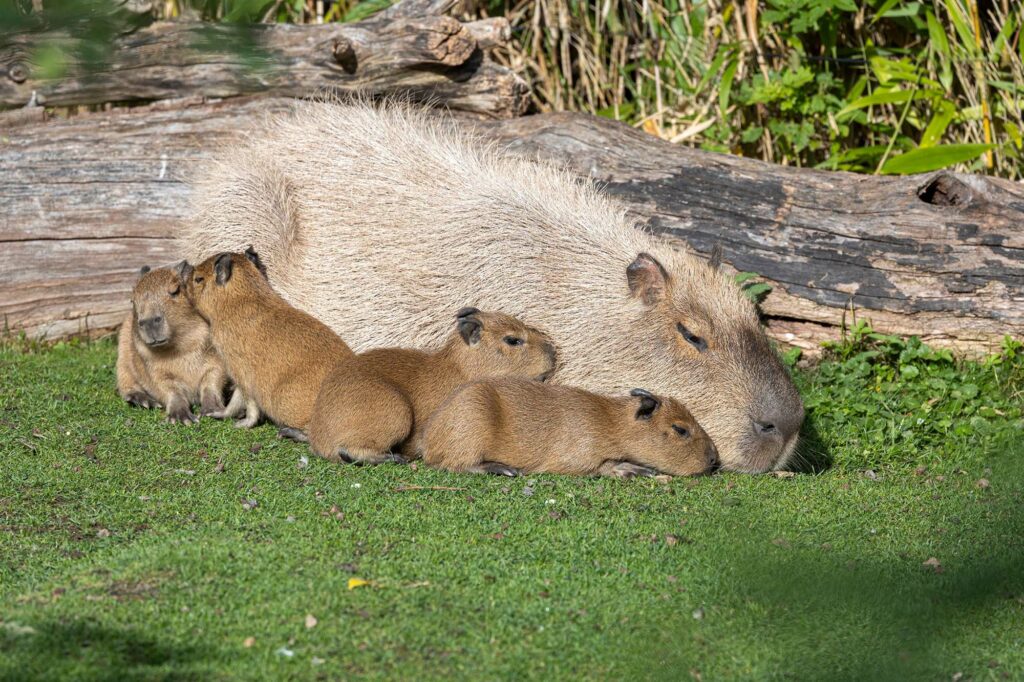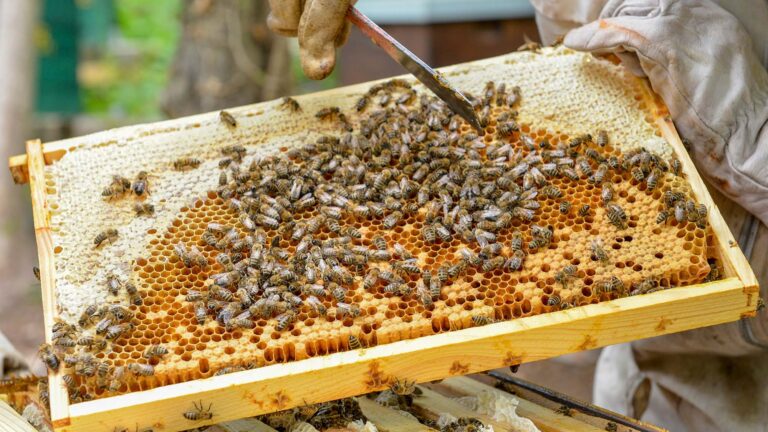These four adorable giant guinea pig-like rodents called capybaras have been born at a zoo in Switzerland.
The birth took place at Zurich Zoo in Switzerland and the four pups were born to mum Sissi and dad Mo. the latter was also born in Zurich as well, the zoo said in a statement.
Their mum Sissi comes from the Hellabrunn Zoo in the German city of Munich, which is located in the southern German state of Bavaria.
Sissi spent almost three years at Zurich Zoo who explained that they do not know yet if the new babies are male or female, saying: “The sex of the young is not yet known. It is determined around three months of age when the pups are examined and chipped for the first time.
“Even in adulthood, Capybara females and males are quite difficult to distinguish from one another because they look very similar and their sexual organs are located inside the body.”
The zoo said that they mainly live off milk and grass at the moment, adding: “As they flee the nest, the young capybaras are already nimble around the facility and follow their parents. The mother provides the young animals with milk for about three to four months. The baby capybaras also start eating grass very quickly, in addition to drinking milk.
“Together with aquatic plants, grasses form the main food of the largest and heaviest rodent living today. Adult capybaras can weigh up to 60 kilogrammes. It is no coincidence that they look like oversized guinea pigs, they belong in the same family as house guinea pigs.”

(Zoo Zurich, Enzo Franchini/Newsflash)
The zoo explained that they are very skilled swimmers as well, saying: “Capybaras are widespread in South America east of the Andes. They are also called water pigs. While they have nothing to do with pigs, they are actually superbly adapted to water.
“They have little webbed toes and, like the crocodile, the capybara’s nose, eyes and ears are lined up. The rodents can submerge themselves almost completely in the water and still smell, see and hear everything.”
The zoo said that they are planning to build a new home at the zoo for the capybaras. The plan is to allow visitors to observe the animals at “lofty heights and diving underwater” and “experience all the dimensions of the South American wetland”.
Capybaras (Hydrochoerus hydrochaeris) are highly social and usually live in groups that can reach up to 100 members although most tend to stick to groups that number between 10 and 20 members.
The rodent species is not considered to be threatened but it is often hunted in South America for its meat and hide.

The four cute capybaras that were born in the Zurich Zoo in Switzerland with their mother Sissi. (Zoo Zurich, Enzo Franchini/Newsflash) 
The four cute capybaras that were born in the Zurich Zoo in Switzerland with their mother Sissi. (Zoo Zurich, Enzo Franchini/Newsflash) 
The four cute capybaras that were born in the Zurich Zoo in Switzerland with their mother Sissi. (Zoo Zurich, Enzo Franchini/Newsflash)
To find out more about the author, editor or agency that supplied this story – please click below.
Story By: Joseph Golder, Sub-Editor: Lee Bullen, Agency: Newsflash
The Ananova page is created by and dedicated to professional, independent freelance journalists. It is a place for us to showcase our work. When our news is sold to our media partners, we will include the link here.




